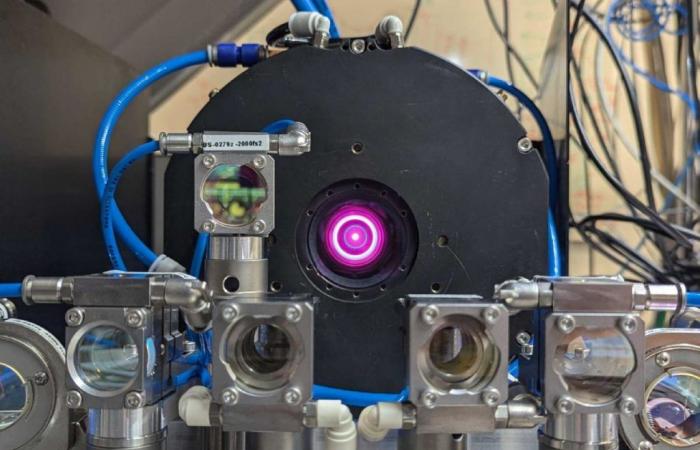
This Swiss ultra-short pulse laser has just broken a new record.
Are Star Wars laser guns within reach? A research team from ETH Zurich has just pushed the limits of the imaginable a little further by creating an ultra-short pulse laser of a unprecedented power, which is expected to have a considerable impact in many sectors.
Read also:
What is an ultra-short pulse laser?
An ultra-short pulse laser generates light pulses of extremely short duration, of the order of femtosecond (10 power -15 second) to picosecond (10 power -12 second) which sometimes earns it the name of laser femtoseconde. The ability of this type of laser to produce high intensity pulses over very short durations makes them particularly useful in applications requiring high precision without causing thermal damage to the target environment.
Grenoble witnessed a historic milestone for the mastery of nuclear fusion thanks to the largest synchrotron in the world
The discovery of ETH Zurich researchers
Researchers at ETH Zurich have developed a laser oscillator capable of generating the most powerful pulses ever recorded. These pulses, lasting less than a picosecond, develop a average power of 550 watts, with peaks reaching 100 megawatts. To make a comparison, this power peak would be sufficient to simultaneously power hundreds of thousands of vacuum cleaners during this period of time.
Innovation in pulse creation
Unlike lasers emitting a continuous beam, which are simpler to handle, the production of short pulses is complex. It requires advanced techniques such as Q-switching or le mode-lockingwhich allow energy to be released in bursts. To overcome these problems, the scientists used a pulsed disk oscillator, requiring a special configuration of mirrors to amplify the light without making it unstable.
The key role of mirrors in amplification
For this laser, a series of special mirrors were arranged to pass light repeatedly through the laser disc, before releasing that same light through another mirror. This amplification of light is crucial before its conversion into powerful and brief pulses for which another technology is used, SESAM.
SESAM, a specialized mirror
SESAM (Semiconductor Saturable Absorber Mirror) was developed thirty years ago by Ursula Keller, co-author of the study. This mirror makes it possible to transform the light amplified during the previous phase into powerful pulses, thus making it possible to overcome the inefficiencies and instabilities of conventional amplifiers.
Future applications of ultra-short pulses
The sectors affected by this discovery are numerous, ranging from precision surgical treatments, nanotechnology, or even for certain physics experiments requiring the manipulation and observation of phenomena at very rapid time scales. These pulses could also play a key role in the development of extremely precise atomic clocks.
Towards even shorter pulses
Encouraged by these results, the researchers are now considering shortening these pulses, with the aim of reaching the attosecond scale (10−18 seconds). This progress could further revolutionize scientific and technological applications.
The French nuclear spearhead hits the jackpot in the United States by signing this contract with the American Department of Energy
This article explores a major innovation in laser technology, where ultra-short, extremely powerful pulses could redefine possibilities in various scientific and industrial fields. The implications of this discovery could well mark a turning point in the use of lasers in science and technology.
Source: ETH Zurich





